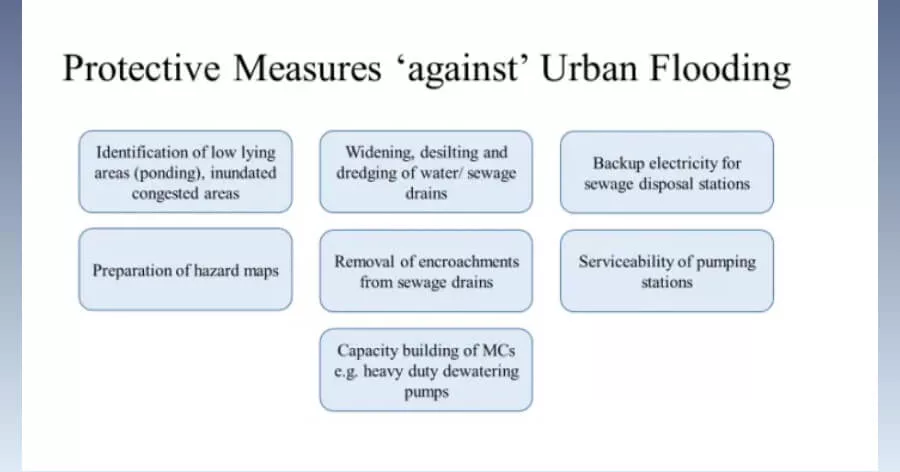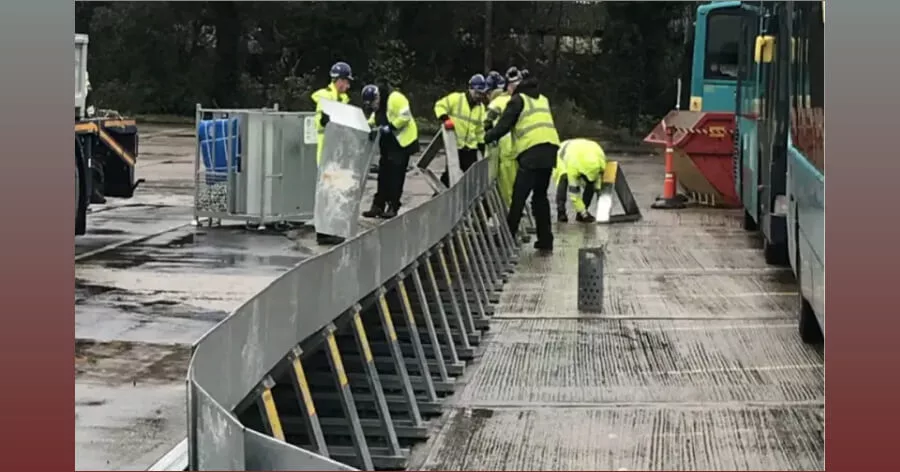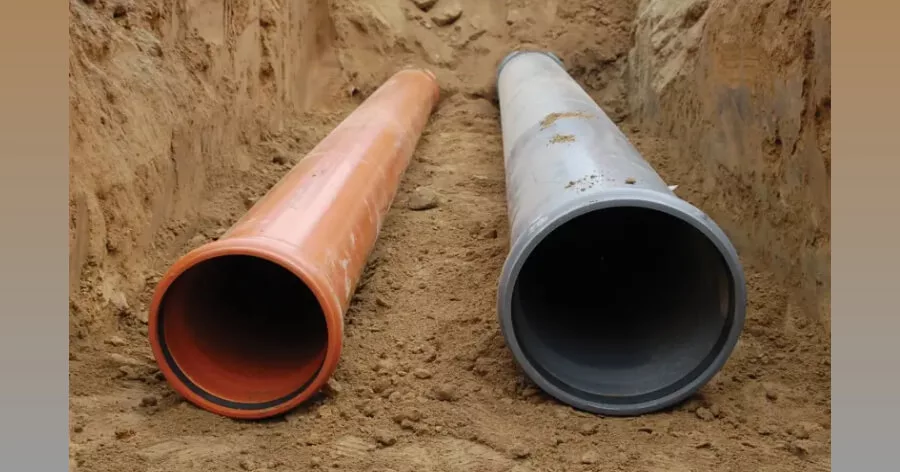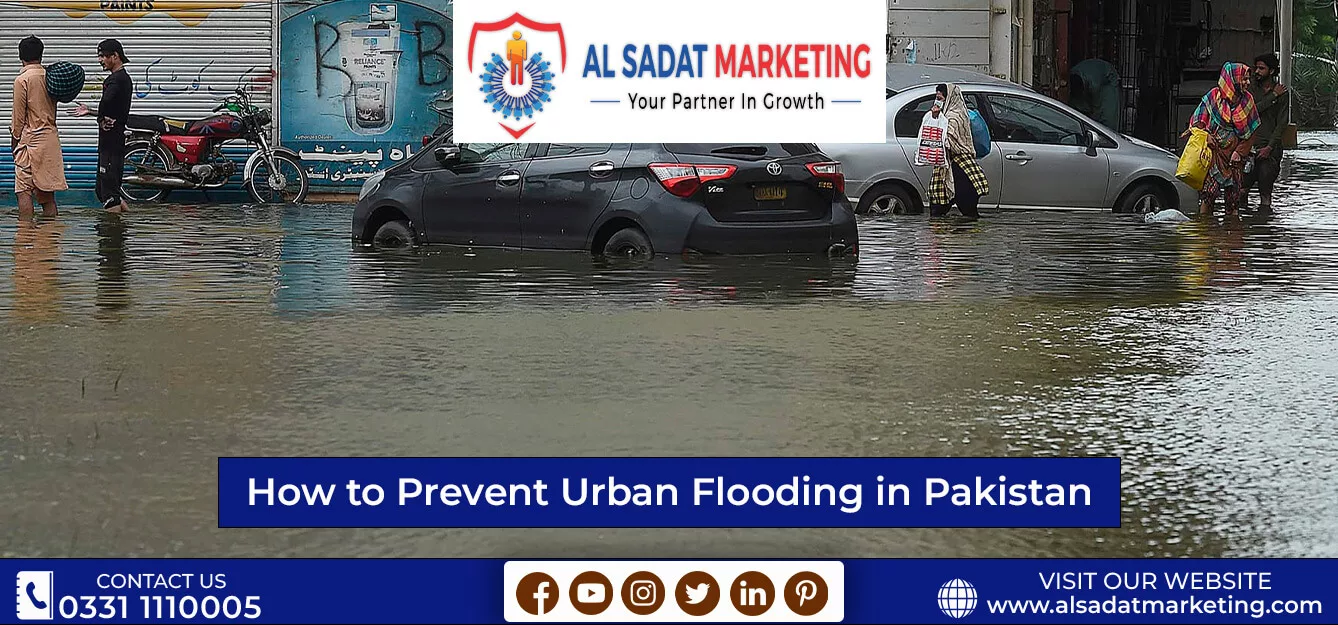How to Prevent Urban Flooding in Pakistan

Did you know that almost 20 million people were affected by the flooding in Pakistan in 2010? More than 1,700 people were killed in the exceptional calamity, which was brought on by the monsoon rains, and it cost $10 billion in losses due to agricultural and infrastructure destruction. Sadly, since then, there has been at least one significant flood in the nation every year.
The recent rainy spell in Karachi and other cities has once again brought attention to Pakistan’s major problem of urban flooding. Most of the metropolitan city was submerged by the rains, including several upscale neighborhoods and urban settlements, affecting daily life for those who lived there. Additionally, almost all main roads and highways were underwater, which halted transportation and created a variety of critical issues.
Unfortunately, Karachi is not the only significant city that experiences flooding during the monsoon season. Even worse, the phenomenon is only going to get worse because of the impending climate disaster.
But not everything is lost. Cities in Pakistan can take several steps to reduce urban floods while preserving residents’ safety. However, let’s first review the definition and causes of urban flooding before moving on to prevention methods.
Urban Flooding
Contrary to popular belief, “flooding that impacts a developed region” is not the only definition of urban flooding. Instead, it is described as the flooding of land brought on by a lot of rain in an urban area or a highly populated region. When there is nowhere for the water to go because of excessive runoff, drainage systems are overloaded.
It’s crucial to realize that urban flooding may happen anywhere, even in luxury gated communities and shabby neighborhoods. However, this issue is more likely to occur in places with inadequate infrastructure and subpar urban development strategies.
Causes of Urban Flooding
The following elements frequently combine to generate urban floods in Pakistan:
Atmospheric Factors
Along with other extreme weather events like thunderstorms and hurricanes, heavy rainfall is one of the primary causes of urban flooding in the majority of the country’s areas.
Water-Related Factors
Urban flooding is a possibility in coastal cities due to poor drainage systems and high tides. In a similar vein, rivers spilling over their banks can also contribute significantly to water inundating populated regions.
Human Activities
These elements have to do with how human activity, such as urban sprawl, affects the environment. Urban flooding in big cities is mostly caused by the encroachment of agricultural land and open spaces, and unsustainable development of natural drainage channels, and riverbeds. In addition to polluting streams, converting natural areas for development raises the risk of flooding by reducing ground absorption and speeding up surface flow.
Other concerns include a lack of flood control measures, poor solid waste management, insufficient storm water drainage systems, and climate change brought on by anthropogenic events.
It is significant to highlight that when it comes to the repercussions or consequences of urban flooding, this occurrence can result in significant financial loss owing to the harm done to homes and infrastructure, loss of livelihood, and decreased business productivity, to mention a few. Additionally, it affects water and sanitation facilities, interferes with supply chains and public transportation, overburdens the healthcare system, and has several other difficult-to-reverse social repercussions.
Prevention Strategies
A lot of precautionary measures can be taken by authorities to prevent urban flooding such as controlling the unnecessary expansion of cities, improving the infrastructure, etc.
Following are some of the effective measures that can be taken to prevent urban flooding in Pakistan:

Green Rooftops
It is more crucial than ever for communities globally to embrace sustainable practices in all aspects of life as the climate catastrophe worsens. Numerous well-known real estate developers have started putting green roofs in their designs as a way to contribute to the improvement of the environment in Pakistan, which is currently dealing with several environmental issues, including air and water pollution.
Rooftop gardens have become more and more common in Pakistan in recent years. Although they are usually found in contemporary high-rises in large cities, anyone may create a tiny garden on their concrete roof without breaking the bank.
The advantages of green roofing are numerous. To begin with, it can aid in regulating the indoor temperature, reducing the need for air conditioners, which are terrible for the environment. Second, vegetation on rooftops can be an effective technique for managing runoff. Additionally, the plants can aid in the removal of nitrogen pollution from precipitation, which may be advantageous for the environment as a whole. Not to mention that green roofs are aesthetically beautiful and offer a calm, serene area where building occupants can congregate and unwind.

Creating Sponge Cities
The construction of sponge cities is one of the best ways to combat floods in urban areas. The phrase describes metropolitan areas with lots of green areas, such as parks and green belts, which are intended to capture rainfall. Authorities should think about building cities like enormous sponges that can absorb excess water and prevent harm to the infrastructure because climate change is intensifying floods.
It’s also important to note how environmentally beneficial sponge cities are. Additionally, they naturally purify and filter the water as they direct it to far-off water bodies. Rainwater is utilized to restock depleted sources of drinking water in developed nations like China, irrigate fields, and provide water to wildlife habitats.
Since it is impossible to completely redesign huge cities, authorities can think about adopting incremental steps to strengthen the infrastructure against floods and droughts. To make the city more porous, they might attempt to add more trees to the landscape around the roadways and establish more open spaces.

Improving The Underground Drainage System
Upgrading the drainage system is the next remedy on our list to stop flooding. It is one of the easiest ways to prevent rainwater from building up in residential and business spaces. Unfortunately, the majority of older pipelines in cities are corroded and rusted, which makes the situation worse.
Water and sewerage management organizations must update the underground pipes and drainage system to prevent sewers from backing up during the monsoon season in order to prevent rainfall-related urban flooding. Additionally, building fresh pipelines to segregate rainwater from sewage may be a wise move. As a result, treatment facilities could filter water properly without being overburdened by contaminated runoff.
Additionally, it is the responsibility of interested municipal organizations and government agencies to ensure that sediment, tree roots, and other debris are not clogging the sewer systems. Regular cleanups would make it possible for stormwater to drain quickly and efficiently.

Storage Tanks Arrangement
Government buildings and major corporate structures should not be allowed to discharge rainwater onto highways; instead, they should provide water storage tanks for RWH (Rainwater Harvesting System) and in other major cities as well
The government needs to implement proper rainwater harvesting on a greater scale in all of Pakistan’s cities, as it has done in some areas of Lahore. In addition to mitigating urban flooding, this will assist in recharging groundwater.
Setting Up Sidewalks and Permeable Pavements
Having permeable sidewalks and pavements can help keep cities from flooding.
Urban residents are not all afforded access to green spaces. In densely crowded areas, where concrete buildings are crammed onto every square inch of land, open spaces are seen as a luxury. But because concrete is impermeable, precipitation is directed toward the drainage system rather than being absorbed by the material.
Rainwater builds up on roadways and sidewalks if the drainage systems are congested. If not stopped, it eventually seeps into the neighboring homes, resulting in urban flooding. Additionally, it causes power outages and may harm the building’s foundations, risking many people’s lives.
Fortunately, if cities start using permeable surfaces like grass instead of impermeable ones, all of this can be prevented. This is also referred to as sustainable drainage since these surfaces may absorb the water and allow it to drain into the soil rather than obstructing and redirecting runoff.
Solution for Solid Waste Management
The management of solid waste requires complete solutions. In Karachi, where 12,000 tons of municipal solid garbage are produced every day, 60% of it never makes it to a dumpsite and instead builds up in drainage systems.
Cities all over the world are developing innovative methods for managing solid waste that center on recycling and trash reduction. Over 340 solid waste management programs have received over $4.7 billion in funding from the World Bank since 2000, for example in China or Indonesia.
Necessary Policy Changes
To lessen floods in Karachi, comprehensive policy changes would be just as crucial as focused improvements. It is important to clarify explicitly what each agency’s national, provincial, and municipal responsibilities are. Administrative fragmentation must be replaced by coordination amongst the various jurisdictions to create whole-city approaches.
New construction must be kept away from the areas that pose the most risk, thanks to risk-sensitive land-use plans and the implementation of such policies. It is impossible to create new infrastructure and risk management plans independently. To lessen the city’s susceptibility over time, these solutions must come together, for instance through the creation and enforcement of construction codes.
Precautionary Measures on a Community Level
Last but not least, local groups need to work together to do their part to keep cities from flooding.
The citizens of cities might promise to use less plastic, which is one of the main causes of clogged pipelines, in addition to following the advice for conserving rainwater. We can also avoid damaging rivers by throwing corrosive materials or oils down drains. If any neighborhood parks are open to the public, the locals can try to make them better by adding additional grass and trees.
Similar to that, we can plant tiny gardens in our backyards or on our rooftops. If it isn’t possible, think about planting a few plants in open spaces near paving stones to increase the soil’s capacity for absorption.
Consider waterproofing your dwellings to reduce harm and injury from urban floors, as a final but not least consideration. Reinstalling electrical outlets higher on the walls and putting a waterproofing seal on doors and windows are a couple of techniques.
Conclusion
In conclusion, a complex network of interconnected dynamics and factors contribute to urban flooding, which calls for strategic cohesiveness to be effective over the long term. To deal with urban flooding and its effects on all facets of society, including the provision of clean drinking water, sanitary conditions, healthcare, agriculture, and food security, existing water management and flood risk control systems may not be strong enough.
You can also invest in other famous and most in demand housing societies, such as , Blue World City, Rudn Enclave, 7 Wonders City Peshawar, Taj Residencia, Kingdom Valley, New Metro City Gujar Khan, Forest Town Rawalpindi, University Town Rawalpindi, ICHS Town, Park View City Islamabad, Multi Gardens B17 Islamabad and Nova City Islamabad.
Al Sadat Marketing please contact 0331 1110005 or visit https://alsadatmarketing.com/
Few more real estate housing schemes which are trending now a days in Islamabad by including: Faisal Town Phase 2, Prism Town Gujar Khan, New City Paradise, Eighteen Islamabad, 7 Wonders City Islamabad, Capital Smart City, Silver City Islamabad, The Life Residencia, Faisal Town Islamabad, Islamabad Golf City, Islamabad Model Town and Marble Arch Enclave.
Al Sadat Marketing is an emerging Real Estate Agency headquartered in Islamabad, Pakistan. With over 10+ Years of experience, Al Sadat Marketing is providing its services and dealing all trending housing societies projects in different cities of Pakistan. Islamabad Projects, Rawalpindi Projects, Gujar Khan Projects, Burhan Projects, and Peshawar Projects etc.
Book Your Plot Now: +92 331 111 0005










